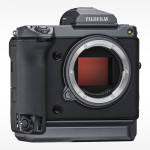
Kwikset has finally gotten into the biometrics game with the launch of the Halo Touch smart lock. Mind you, it’s not just a version of the Halo with a fingerprint reader added, this is a lock of a considerably different design—at least on the outside of the house.
You’ll notice the difference on the exterior escutcheon immediately. While the original Kwikset Halo was a garish monstrosity, the Halo Touch is decidedly demure. Part of that is because the Touch no longer has a numeric keypad to take up a lot of space. Instead, there’s a small fingerprint scanner above a standard keyhole, all placed into a rectangular chassis just 3.5 x 2.75 inches in size. (An alternate, more classical design is slightly larger and comes with curves and beveled edges; both designs are available in a choice of two finishes.) A bar of LEDs appears at the top of the escutcheon; these light up in various colors depending on whether a fingerprint is accepted and when the lock is engaging.
While the redesigned exterior is quite handsome, unfortunately nothing has changed with the interior of the lock, and it remains a multi-part eyesore made of brushed nickel and black plastic. Installation requires the typical, time-consuming steps of attaching a frame to the exterior escutcheon with two thick screws, bolting the electronics on top of that, and then attaching a cover over all of it. I found getting everything aligned properly to be especially tricky with this lock, mainly owing to the stiff and awkward cable that connects the two escutcheons’ electronics. Wedging the cable into the small chamber behind the interior escutcheon without it getting pinched by the door is tricky, but with some trial and error I eventually got everything carefully locked into place.

Installing the lock with the Kwikset app was a streamlined breeze (especially in comparison to previous Kwikset locks), though strangely the lock failed to find my local Wi-Fi network automatically, and I had to type in the name of my network (and password) manually. (Note that only 2.4GHz networks are supported.) From there, registering users—and enrolling fingerprints—was simple and intuitive, with each fingerprint requiring only three successful scans to be successfully registered.
Kwisket’s app is fairly basic, but as has always been the case, it gets the job done. New users are easy to add and can be restricted by date or limited to certain days of the week and times of day. (The lock supports a maximum of 50 users and 100 fingerprints total.) Manual lock/unlock operations are speedy with the app, and a detailed history of comings and goings is kept within the app as well. The fingerprint scanner was also especially effective, fast, and accurate in my testing.

Additional settings are limited to enabling auto-lock (with a configurable countdown ranging from 30 seconds to 10 minutes), disabling sounds, and disabling the small interior status LED (but not the exterior LEDs). The app also connects with Google Assistant—but not Alexa—which lets you unlock the door via a spoken PIN. Also worth noting is that the lock supports Kwikset SmartKey, so you can reset the lock to work with an existing Kwikset-branded key without having to call a locksmith.
The only major issue I had with the app is how ploddingly slow it is whenever you try to make a change. Whenever you tweak a setting, you can only make one change at a time, and then you have to wait for the new setting to be uploaded to the lock (presumably via the cloud and back). This is a lengthy process that can take close to a minute to complete, during which time you can’t do anything else lest you receive a “Syncing must complete before further changes can be made” error. It’s a frustrating and nagging issue with the app, and one which makes me question the sanity and capabilities of its programmers.
The lock also isn’t cheap. At $249 it’s $20 more than the Kwikset Halo was at launch. (The keypad Halo was selling for less than $150 on Amazon as of this writing.) It’s also more expensive than most other biometric locks you’ll find on the market, but not obscenely so (the Securam Touch and the Eufy Security Smart Lock Touch were each selling for about $200 as of this writing.
The Lockly Secure Plus and Lockly Secure Pro were going for $279 and $300 respectively, but the Plus includes an entry handle.) Our absolute favorite lock with a fingerprint reader, on the other hand—the Level Touch—costs $329 and is not entirely cross-platform (favoring iOS over Android devices).
Given its general high quality, improved exterior design, and solid operation, the Kwikset Halo Touch is definitely a contender if you prefer fingerprint-based access to a more traditional keypad—and unless you need a lock for a rental property or another situation where you have lots of transient visitors, why wouldn’t you?
Out with the keypad, in with the fingerprint scanner—and a few other welcome changes to make this lock a winner.
Pros
- Effective operation with a top-notch fingerprint scanner
- Much more attractive exterior escutcheon
- Streamlined setup process
Cons
- App mired in lengthy delays every time a setting is changed
- Interior escutcheon is still industrial-class ugly
- Expensive
Source: techhive.com









































